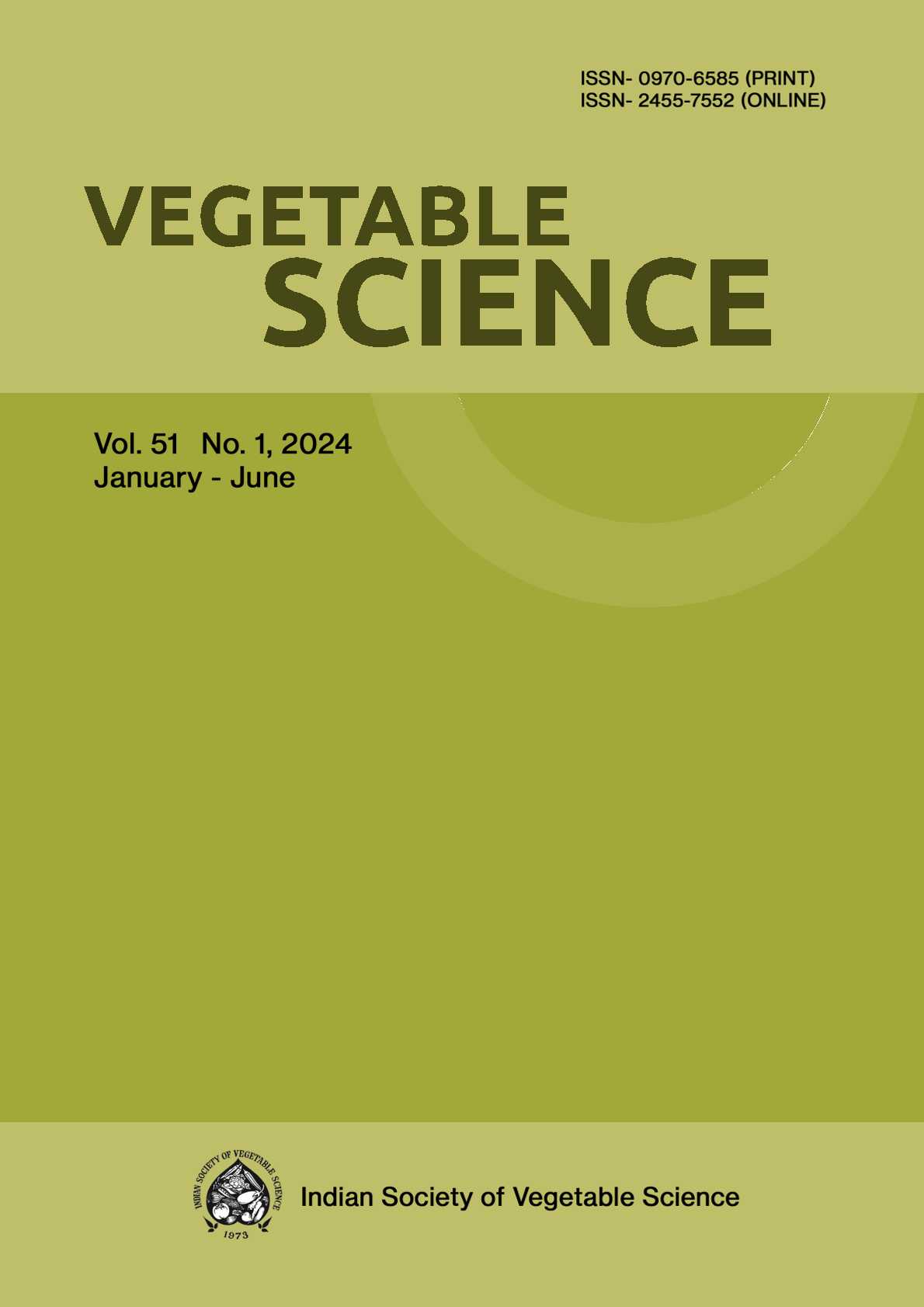Estimation of mutagenic efficiency and effectiveness of ethyl methane sulphonate in two divergent lines of tomato (Solanum lycopersicum L.)
DOI:
https://doi.org/10.61180/Keywords:
Ethyl methane sulphonate, LD50, Chlorophyll mutants, Mutagenic efficiency and EffectivenessAbstract
Present investigation was carried out to study the frequency and spectrum of macro-mutations along with mutagenic efficiency and effectiveness of ethyl methane sulphonate (EMS) in tomato. For this purpose, two tomato cultivars “Patharkutchi” and “Alisa Craig” were subjected to EMS treatments employing 10 concentrations which ranged between 0.05 to 0.50% solutions. Results showed that seed germination, seedling height and pollen fertility in M1 generation reduced steadily with the increase in concentrations of EMS. The LD50 dose for Patharkutchi and Alisa Craig was 0.64 and 0.49%, respectively. Mutation frequency and mutagenic efficiency increased with the increasing concentration up to a certain level which there after started to decrease in both the genotypes. Mutagenic effectiveness generally decreased with the increase in the concentration of EMS solution. The most effective and efficient EMS treatment was 0.20 to 0.30% solution at which maximum number of desirable variation occurred in M2 generation in both the genotypes and those variants can be utilized in further genetic study and breeding programme of tomato
Downloads
Published
Issue
Section
License

This work is licensed under a Creative Commons Attribution-NonCommercial-NoDerivatives 4.0 International License.






